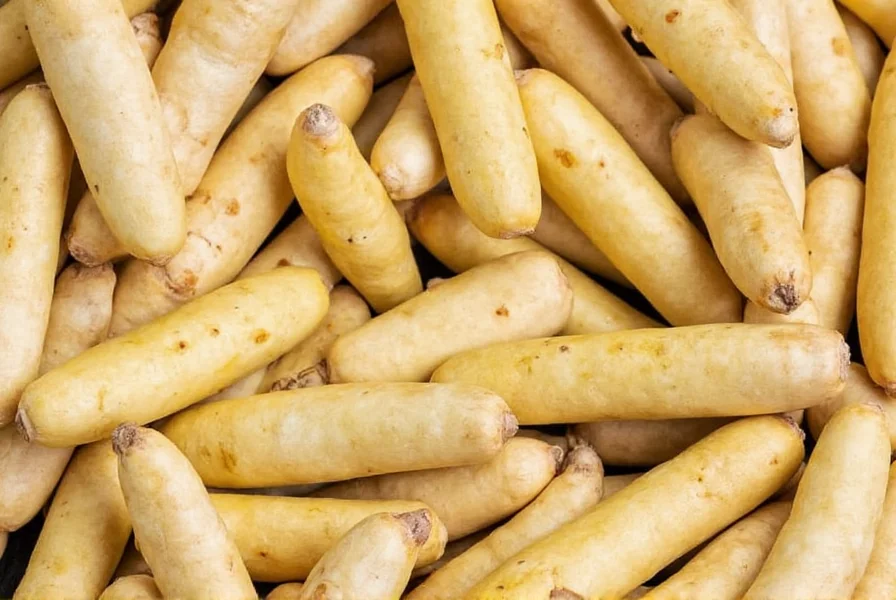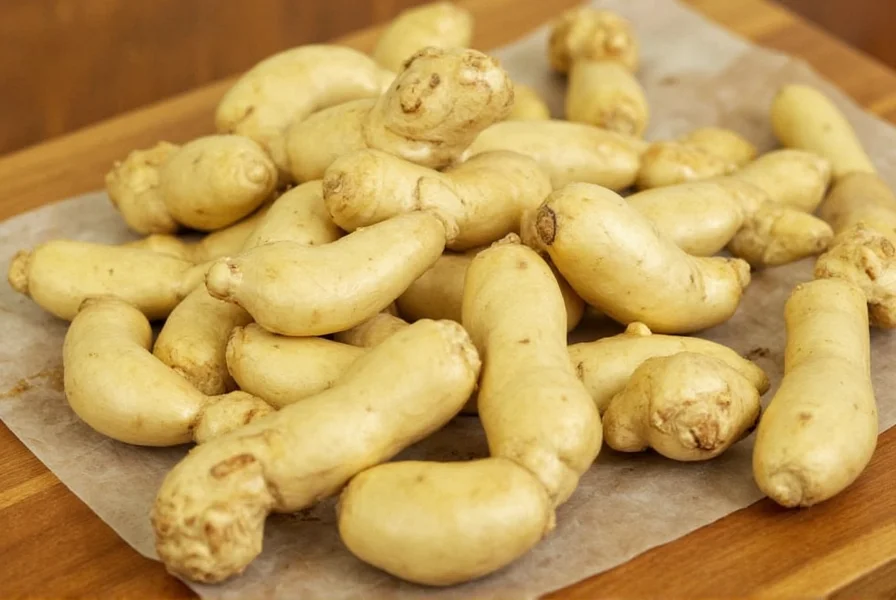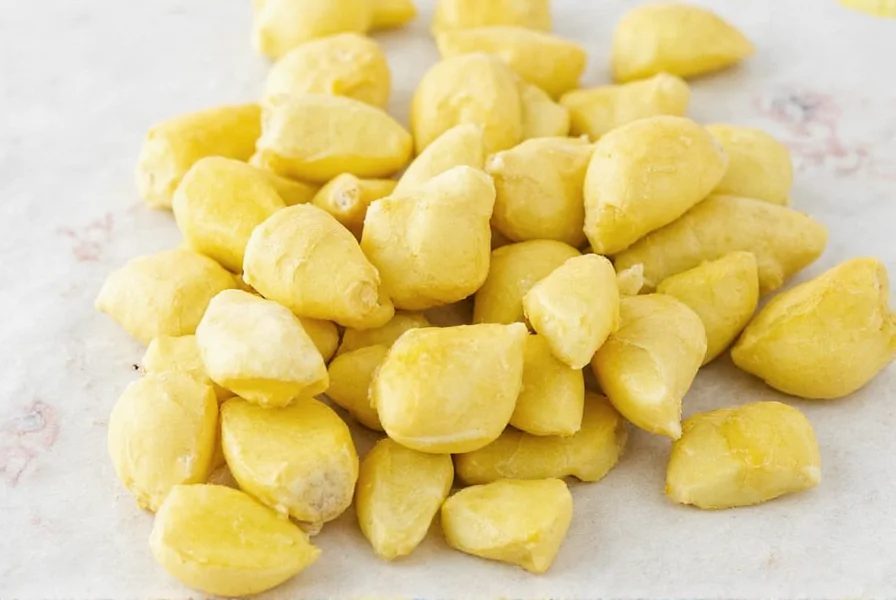Understanding this unique ingredient opens up a world of culinary possibilities. Stem ginger isn't actually from the stem of the plant but refers to the young, tender rhizomes (underground stems) harvested before they fully mature. This early harvest results in a more delicate texture and less fibrous structure compared to mature ginger.
What Makes Stem Ginger Different
The preservation process transforms ginger's character significantly. While fresh ginger delivers a sharp, spicy heat, stem ginger develops a complex flavor profile—sweet with subtle warmth and citrus notes. The sugar syrup preservation softens the fibrous texture while maintaining some structural integrity, making it ideal for both cooking and eating as is.
How Stem Ginger Is Produced
Traditional production involves several careful steps:
- Young ginger roots are harvested at 5-6 months (vs 8-10 months for mature ginger)
- Peeling and slicing into uniform pieces
- Initial blanching to reduce raw heat
- Gradual sugar infusion over days or weeks
- Final preservation in heavy syrup (typically 60-70% sugar concentration)
This slow preservation method allows flavors to develop while maintaining texture—a critical factor distinguishing quality stem ginger from inferior products that become mushy or overly sweet.
Culinary Applications of Stem Ginger
Chefs value stem ginger for its versatility across sweet and savory applications. Unlike powdered ginger which provides only flavor, stem ginger contributes both taste and textural elements to dishes.
| Culinary Category | Recommended Uses | Substitution Ratio |
|---|---|---|
| Baking | Cakes, biscuits, fruit crumbles | 1:1 for crystallized ginger |
| Savory Dishes | Curries, stir-fries, marinades | 1 tbsp syrup = 1 tsp grated fresh |
| Beverages | Cocktails, teas, syrups | Muddle 2-3 pieces per drink |
Substituting Stem Ginger in Recipes
When stem ginger isn't available, proper substitution requires understanding what element you need:
- For texture and visual appeal: Candied ginger (though typically drier) works best as a direct substitute
- For flavor in liquids: Use 1 tablespoon of stem ginger syrup to replace 1 teaspoon of grated fresh ginger
- In baking: Replace 1/4 cup chopped stem ginger with 2 tablespoons ginger syrup plus 1/8 teaspoon ground ginger
Never substitute equal amounts of fresh ginger for stem ginger—this common mistake creates overwhelming heat and alters moisture balance in recipes.
Storage and Shelf Life
Properly preserved stem ginger maintains quality for remarkable durations:
- Unopened jars: 2-3 years in cool, dark pantry
- Opened containers: 6-12 months refrigerated in original syrup
- Freezing option: Drain and freeze pieces on parchment, then store in airtight container for up to 18 months
The syrup itself becomes a valuable ingredient—add to vinaigrettes, glazes, or cocktail mixers. Discarding ginger syrup represents a significant waste of flavor potential.
Ginger's Natural Properties
Ginger contains gingerols and shogaols—compounds responsible for both its distinctive flavor and studied physiological effects. The preservation process converts some gingerols to shogaols, creating a milder but more complex flavor profile. While culinary use provides enjoyment, it's important to note that food applications differ significantly from therapeutic doses studied in research contexts.
Quality Indicators for Stem Ginger
When selecting stem ginger, look for these quality markers:
- Translucent, not opaque pieces indicating proper syrup penetration
- Firm but yielding texture (avoid mushy or hard pieces)
- Golden-amber color rather than dark brown (sign of overcooking)
- Syrup with medium viscosity—not watery or crystallized
Lower quality products often contain preservatives like sulfur dioxide to maintain color, which can create an unpleasant chemical aftertaste. Reading ingredient labels helps identify pure preserved ginger products.

Creative Culinary Uses Beyond the Obvious
Professional chefs employ stem ginger in innovative applications that home cooks can easily adopt:
- Finely diced in fruit salsas for fish or chicken
- Blended into mayonnaise for Asian-inspired sandwiches
- Infused into cream for panna cotta or ice cream
- Chopped in oatmeal cookie dough for texture contrast
- Simmered with onions for sophisticated marmalade
The syrup deserves equal attention—simmer with vinegar and mustard seeds for an instant chutney, or reduce with orange juice for a glaze. Nothing goes to waste when working with quality preserved ginger.

Understanding Ginger Terminology Confusion
The term "stem ginger" causes frequent confusion. Botanically, ginger grows from rhizomes (underground stems), not roots. The "stem" in stem ginger refers to the young, tender nature of the rhizome when harvested—not an actual plant stem. This historical naming convention persists despite botanical inaccuracy.
When shopping, you might encounter these related products:
- Candied ginger: Typically drier, with crystallized sugar coating
- Crystallized ginger: Similar to candied but often larger pieces
- Ginger confit: French preparation with lighter syrup
- Stem ginger in syrup: The proper term for the product most call "stem ginger"
These distinctions matter for recipe success, as moisture content and sugar concentration vary significantly between preparations.
What's the difference between stem ginger and regular ginger?
Stem ginger refers to young ginger rhizomes preserved in sugar syrup, resulting in a sweet, mellow flavor and tender texture. Regular fresh ginger has a sharper, spicier heat and fibrous texture. The "stem" designation refers to the young, tender nature of the harvested rhizome, not an actual plant stem.
Can I make stem ginger at home?
Yes, though it requires patience. Peel young ginger, slice thinly, blanch briefly, then gradually add to simple syrup over 5-7 days. The slow sugar infusion prevents toughness. Home preparations typically last 2-3 months refrigerated versus commercial products' 2-3 year shelf life due to precise pH and sugar concentration control.
Is stem ginger healthy?
While ginger contains compounds studied for various effects, stem ginger's high sugar content means it should be enjoyed in moderation as a flavoring rather than consumed for health benefits. One tablespoon contains approximately 15g sugar. The preservation process converts some compounds to forms with different properties than fresh ginger.
Why does my stem ginger taste bitter?
Bitterness typically indicates overcooking during preservation or using ginger that was too mature when harvested. Quality stem ginger should have a balanced sweet-heat profile without harsh bitterness. Check expiration dates and storage conditions—exposure to light or temperature fluctuations can degrade quality.
How do I use stem ginger syrup?
The syrup is incredibly versatile—use it in cocktails, salad dressings, marinades, or as a sweetener in tea. Reduce it with vinegar for an instant chutney base, or mix with mustard for a sandwich spread. One tablespoon of syrup equals approximately one teaspoon of grated fresh ginger in recipes requiring ginger flavor without texture.











 浙公网安备
33010002000092号
浙公网安备
33010002000092号 浙B2-20120091-4
浙B2-20120091-4